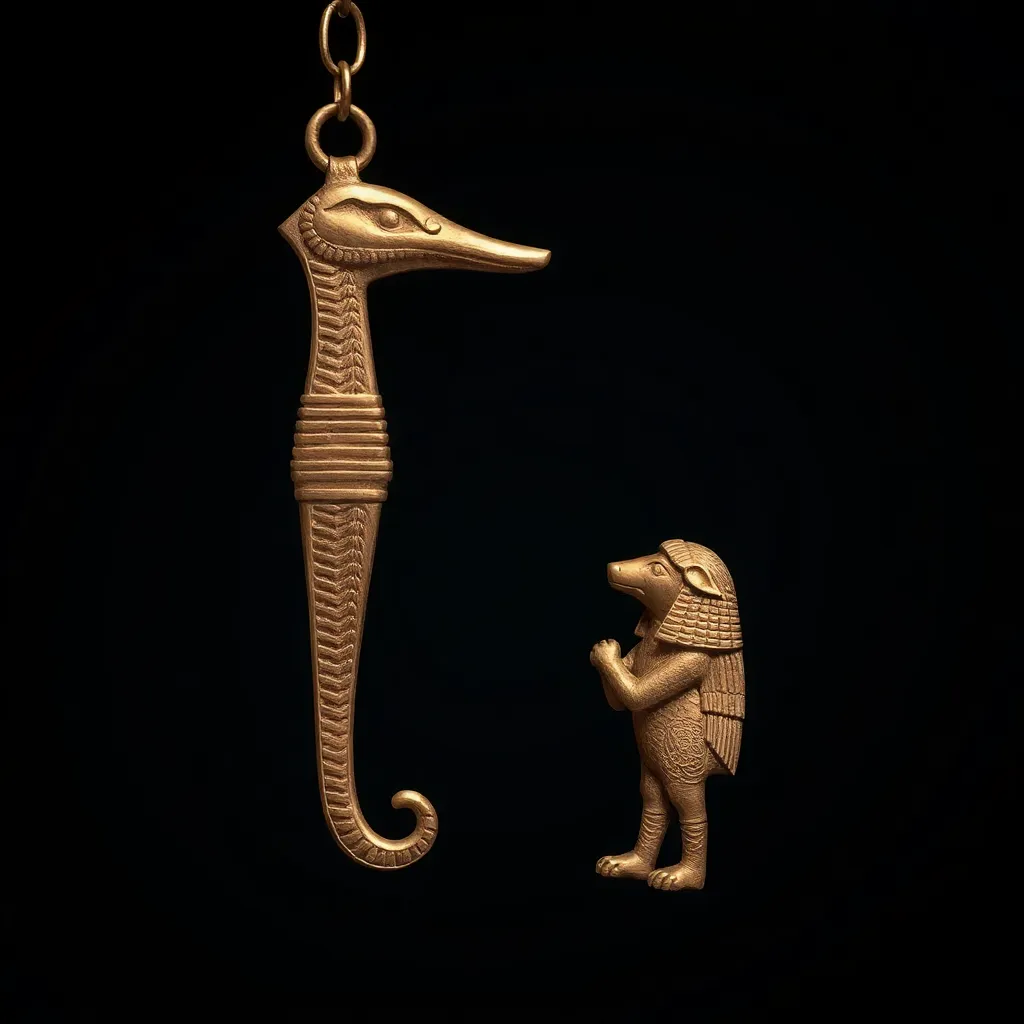Understanding the Symbolism of the Uraeus in Amulets
1. Introduction to the Uraeus
The Uraeus, also known as the rearing cobra, is a significant symbol in ancient Egyptian culture. Defined as a stylized representation of an Egyptian cobra, the Uraeus was often depicted with its hood raised, symbolizing protection and sovereignty. Historically, this emblem adorned the crowns of pharaohs and represented the goddess Wadjet, the patron deity of Lower Egypt. Its importance extended beyond mere decoration; it served as a powerful symbol of divine authority and protection throughout ancient Egyptian history.
2. The Uraeus as a Protective Symbol
The Uraeus played a crucial role in safeguarding its wearer. It was believed that the cobra’s nature embodied the fierce protective qualities necessary for a ruler. The Uraeus was often associated with the concept of divine protection, as it was thought to ward off enemies and evil spirits. Pharaohs would wear the Uraeus on their crowns or helmets during battle, signifying their divine right to rule and their connection to the gods.
- Protection against threats
- Symbol of divine authority
- Guardian against chaos and disorder
3. The Iconography of the Uraeus
The imagery of the Uraeus is distinct and easily recognizable. Typically depicted as a snake with its hood raised and often embellished with intricate details, the Uraeus symbolizes both protection and sovereignty. Variations in representation can be observed in different amulets and artifacts, showcasing the artistic styles of various periods in ancient Egyptian history. Some common representations include:
- Hooded cobra with a sun disk
- Uraeus entwined with other symbols, such as the ankh
- Different colors and materials used in amulet creation
4. Use of Uraeus in Ancient Egyptian Amulets
Amulets featuring the Uraeus were widespread in ancient Egypt, utilized for their protective qualities. These amulets came in various forms, including:
- Necklaces
- Rings
- Bracelets
Each type of amulet was not only worn for personal protection but also held cultural and religious significance, especially in burial practices. The Uraeus was often placed with the dead to ensure safe passage to the afterlife, symbolizing the deceased’s connection to the divine and their continued protection.
5. The Uraeus and the Concept of Sovereignty
The Uraeus is heavily associated with the concept of sovereignty in ancient Egypt. It signified the divine right of pharaohs to rule, embodying both power and legitimacy. The presence of the Uraeus on royal insignia and art reinforced the idea that the pharaoh was chosen by the gods to lead the people. This connection included:
- The Uraeus appearing on the crowns of pharaohs
- Use in royal regalia and ceremonial artifacts
- Representation in state seals and official documents
6. The Uraeus in Mythology and Religion
In Egyptian mythology, the Uraeus is closely linked to the goddess Wadjet, who was often depicted as a cobra. Wadjet was revered as a protective deity, especially for the pharaohs and the land of Egypt itself. Her significance extends to the afterlife, where the Uraeus symbolized rebirth and protection in the journey beyond death. This connection highlights the spiritual meaning attributed to the Uraeus, emphasizing its importance in both life and afterlife.
7. Modern Interpretations and Uses of the Uraeus
In contemporary times, the Uraeus has influenced modern jewelry designs and symbolism. Many artisans and jewelers draw inspiration from ancient Egyptian motifs, leading to a resurgence of interest in the Uraeus as a symbol of protection and strength. The implications of this revival are significant, reflecting a broader cultural appreciation for ancient Egyptian heritage. Today, the Uraeus is often seen in:
- Fashion and jewelry
- Artistic representations in various media
- Cultural symbolism in tattoos and personal adornments
8. Conclusion
In summary, the Uraeus holds profound significance both in ancient Egyptian culture and in modern interpretations. Its role as a protective symbol, its association with sovereignty, and its presence in mythology underscore its importance in the historical narrative of Egypt. The enduring legacy of the Uraeus is evident not only in the artifacts that have survived but also in the ways it continues to inspire contemporary art and symbolism. As we reflect on the Uraeus, we recognize its powerful connection to themes of protection, authority, and the divine, ensuring that its story lives on through time.




